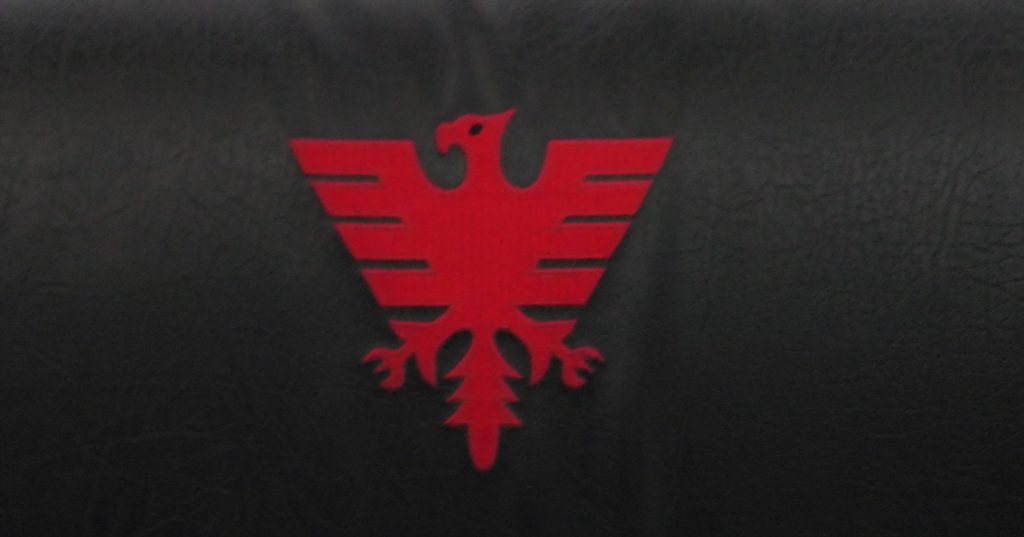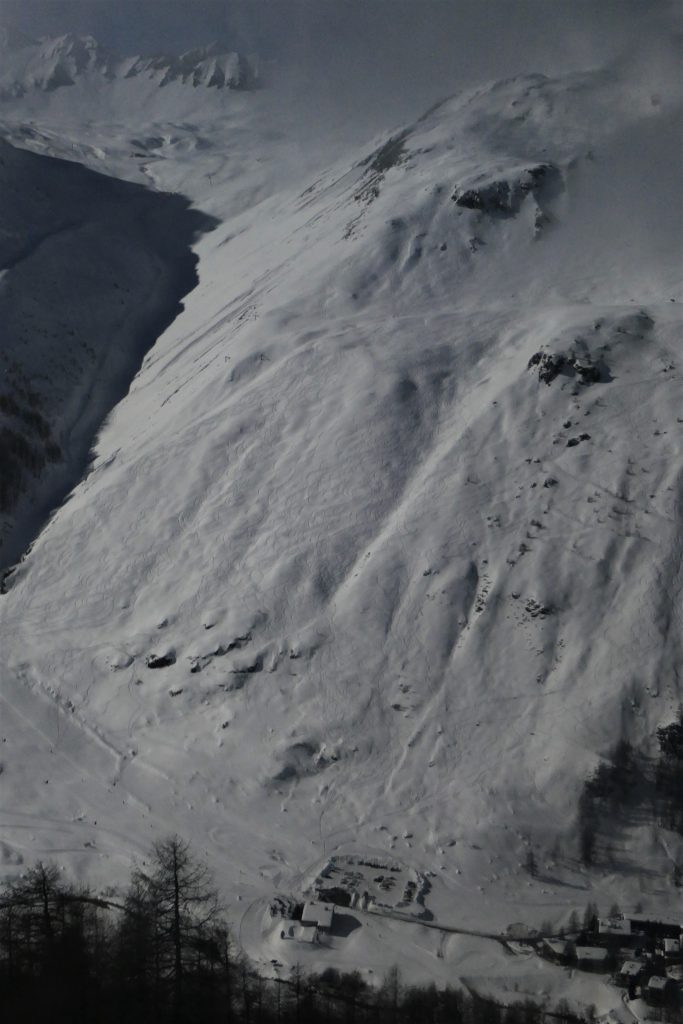The video basically records Hannah’s first parallel turns –
Skating
Hannah started out with skating exercises – skis diverging at the tips – to counteract any classic “snowplough” that might still be in her system from an experience 10 years previously.
Propulsion in skating is most efficient when you allow gravity to do the job – by falling both forward and laterally to the inside of the diverging skis – then catching yourself with the other foot that you lifted forward to place underneath you.
Falling is actually a directing of the Centre of Mass (CoM) and it’s exactly the same principle that we would later use for making turns on the skis.
When making skating turns you have to first lift and step – diverging the tip of the the ski on the side of the direction that you are going in – not the ski on the other side.
We practised stationary “star turns” to help develop the coordination – then did skating turns around in a circle. – then running straight down the hill and skating out to one side – directing the CoM in the direction it has to go in.
Stepping develops independent leg action and the confidence to move the CoM no matter which leg you are standing on – or which ski is supporting your weight.
Alignment
We took a moment to check boot alignment with the skeletal structure of the legs – everything was good!

Dynamics (First Parallel Turns)
From running straight downhill with the skis parallel – just move the CoM across slightly in the direction you want to go – as if about to make a skating step (but without stepping) – and wait – the skis turn you while remaining parallel.
It’s not important which ski supports the weight – the critical importance is the direction of movement of the CoM – both skis will support the change of direction – regardless of edge use or pressure. The first turn in the video today is when Hannah was learning this.
Braking Plough
Once the physical sensations of directing the CoM were assimilated from the skating actions I decided the most appropriate way to advance would be through the use of a special “modified” snowplough where it’s used with the CoM still being the key focus and provides a very safe braking mechanism on steeper terrain.
Instead of “transferring weight ” to the outside ski as in an “normal” Snowplough the focus would be moving the centre of mass toward the turn centre and keeping it there through the whole turn. (Even when working against gravity in the second half of the turn.) This puts the weight on whichever ski is downhill of the body – that ski always being on a braking uphill edge. This means the start of the turn has most of the weight on the “inside” ski of the turn and only the second half of the turn being on the “outside” ski. The inside ski will always travel sideways when this is working correctly.
If the hips and upper body rotate into the new turn this will pull the centre of mass toward the outside of the turn and create many problems. Hannah made a good job of correcting this tendency on her right side – where she was trying to twist the outside ski into the turn by force. Just like on a bicycle – there is no twisting involved in turning.

Perpendicular
When sliding downhill the body’s reference is “perpendicular” to the slope – not vertical as it would be when stationary. Perpendicularity is best maintained by standing on the balls of the feet with some forward pressure on the boots. Turning power comes from the fronts of the skis – just like it would on a bicycle. If the skis track off in a straight line it’s probably due to getting back into the vertical when you should be perpendicular.
Dynamics
There’s a button on the top of this blog page for “Dynamics” where there is a general explanation and description of the exercises. The goal is to replace the support of the braking plough – with its inside leg stabiliser – with the lifting power of the outside ski in the turn – all the weight being maintained on the outside leg through the process of pushing (with that leg) the CoM into the new turn initially by accelerating the CoM then the skis generating a continued angular acceleration. This – just as if riding a bicycle – requires some forward speed and the plough has been used to progressively build confidence to get to the point where the necessary speed can be accepted – while cultivating the correct mechanics.
Generally a beginner will by means of this progression be able to ski parallel on a gentle slope on day one.


